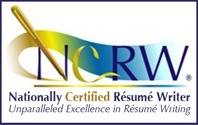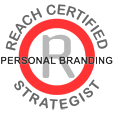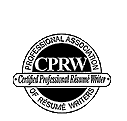- Home
- Blog
- Free Evaluation & Quote
- Services
- Qualifications
- Testimonials
- Sample Resumes
- Chief Financial Officer – Before
- Chief Financial Officer – After
- Vice President Sales
- Sales and Marketing
- Chief Executive Officer / COO
- Chief Operating Officer
- C-Level Executive
- Healthcare CFO – Before
- Healthcare CFO – After
- Global E-Commerce and E-Business
- Chief Information Officer
- IT Executive
- Human Resources – Before
- Human Resources – After
- Contact Us
- Home
- Blog
- Free Evaluation & Quote
- Services
- Qualifications
- Testimonials
- Sample Resumes
- Chief Financial Officer – Before
- Chief Financial Officer – After
- Vice President Sales
- Sales and Marketing
- Chief Executive Officer / COO
- Chief Operating Officer
- C-Level Executive
- Healthcare CFO – Before
- Healthcare CFO – After
- Global E-Commerce and E-Business
- Chief Information Officer
- IT Executive
- Human Resources – Before
- Human Resources – After
- Contact Us
5 Tips on How to Use LinkedIn Better
January 6, 2015 By Martin Weitzman Comments are Off LinkedIn, Networking, Recruiters, Social Media, Your Career
{Click here to read the original article on Real Simple.}
Whether you’re looking for a new job or just want to network, use these tips to make your profile more effective.
You’ve friended just about everyone you’ve ever met on Facebook (including your crush from the summer of ‘89). You’re a pro at curating deceptively easy dinner-party recipes on Pinterest. And on Twitter you have a couple of hundred followers reading your 140-character zingers. Yet all this time you’ve hesitated to join LinkedIn. Are you missing out? Here’s a guide to the career-networking website, along with ways to navigate it if you do sign up.<!–more–>
Who should use LinkedIn?
If you work in health care, finance, marketing, event planning, law, technology, consulting, human resources, or sales or at a nonprofit, “the site is a great place to connect with people who can help you professionally, and vice versa, whether you’re job-seeking or networking,” says Victoria Ipri, the CEO of Ipri International, a Philadelphia-based marketing firm that specializes in LinkedIn strategies. About 26 percent of companies research potential employees on the site, according to a 2013 CareerBuilder study. Feel free to skip membership, however, if you’re contentedly self-employed with a trade like personal organizing or gardening; you’ll be able to market yourself to clients more easily on Facebook.
Should you connect with your best friend?
What about a stranger? Your college roommate is a nurse, and you’re an accountant. So you can’t really assist each other professionally, right? Not necessarily. “You’re not just connecting with a person, but their network as well. She may have a link to someone who could help you,” says Viveka von Rosen, the author of LinkedIn Marketing ($30, amazon.com). For the same reason, it’s also wise to consider accepting a request from someone you don’t know. “When you receive a random invitation, look at the sender’s profile and determine if it is a quality connection for your needs and circumstances before accepting or rejecting it,” says Ipri.
What’s the best way to grow your network?
Use the site’s “People You May Know” tool (located on the right side of your page) to reach out to professionals with similar backgrounds and connections. If you’re interested in working for a particular company (IBM or Procter & Gamble, say), go to its page and click to “follow” it, then look at the list of people who work there. Next, find an employee whose path you would like to emulate, then invite her to connect, says Nicole Williams, the resident career expert at LinkedIn: “To demonstrate that you would be a meaningful connection, write a note that conveys that you have done research on her employer and her personal accomplishments.”
How frequently do you need to check in?
Every day for a few minutes, and once a week for about a half hour. That’s how much time you’ll need to write to a new connection and to participate in a group discussion. Keep in mind: “Hiring managers are 10 times more likely to look at your profile if you post something at least weekly,” says Williams.
Should your profile page replicate your résumé?
It should be even more detailed. Think of it as your résumé, plus everything else that you couldn’t fit on it, like video clips of speeches that you’ve given and news articles about your work, says von Rosen. The more thorough you are in describing yourself, the easier it is for an employer to assess your qualifications. So go on—toot your own horn.
Comments are closed.
Testimonials




C-Level Resume Writer (CEO)
Chief Operating Officer (COO) resumes
Chief Technology Officer (CTO) resumes
Chief Information Officer (CIO) resumes
Chief Nursing Officer (CNO) resumes
Chief Security Officer (CSO) resumes
Chief Marketing Officer (CMO) resumes
Chief Financial Officer (CFO) resumes
Senior Financial Director resumes
Vice President, Sales resumes
Supply Chain Executive resumes
Technology Vice President resumes
Business Intelligence Executive resumes
IT Director resumes
Executive Vice President (EVP) resumes
Human Resources (HR) VP/Director resumes
Marketing Director resumes
Vice President, Bank Operations resumes
Operations Director resumes
Media Relations Director resumes
Land Developer resumes
Vice President of Investments resumes
Network Operations Director resumes
Consulting Practice Director resumes
Operations Director resumes
IT Manager resumes
Program Director resumes
Territory Sales Director resumes
Communications Director resumes
Hospice Director resumes
General Manager resumes
Business Development Manager resumes
Retail Operations Manager resumes
Product Manager resumes
Restaurant General Manager resumes
Biotech & Medical Device resumes
Regional Sales Manager resumes
Corporate Training Manager resumes
Director, Non Profit Organizations resumes
Corporate Attorney resumes
General Counsel resumes
Corporate Counsel resumes
Wall Street resumes
Investment Industry resumes
Banking Industry resumes
Automotive resumes
Automotive Industry Resume Writer
Investment Industry Resume Writer
Wall Street Resume Writing Services
Attorney Resume Writing
Corporate Attorney Resume Writing
Attorney Resumes
Sales Resume Writing
Pharmaceutical Sales resumes
